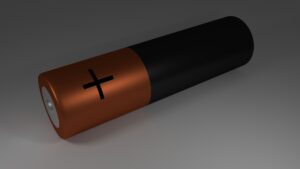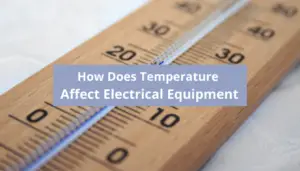When designing an electrical system, one important consideration is to ensure that the voltage drop in the system is within acceptable limits.
Excessive voltage drop can result in a number of issues, including reduced efficiency, increased energy consumption, and premature equipment failure.
In this article, we will explore the factors that affect voltage drop and provide guidelines for selecting the correct wire size for a given load.
Table of Contents
Factors Affecting Voltage Drop
The following factors can affect voltage drop in a wire:
- Wire Length: Longer wires have higher resistance and therefore cause greater voltage drop than shorter wires.
- Current: Higher current levels result in greater voltage drop due to the increased resistance in the wire.
- Wire Gauge: Smaller wire gauges have higher resistance and therefore cause greater voltage drop than larger wire gauges.
- Temperature: Higher temperatures can increase the resistance of the wire and cause greater voltage drop.
Calculating Voltage Drop
The voltage drop in a wire can be calculated using the following formula:
Vd = (2 x L x I x R) / 1000
Where:
Vd = Voltage drop in volts L = Length of the wire in feet I = Current in amperes R = Resistance of the wire in ohms per 1000 feet
Selecting the Correct Wire Size
To select the correct wire size, you need to calculate the voltage drop and compare it to the maximum acceptable voltage drop for the application.
The maximum acceptable voltage drop varies depending on the application, but a commonly used value is 3% for branch circuits and 5% for feeder circuits.
I have a detailed article about cable sizing step by step read it for more information.
Example Calculation
Suppose you have a load that requires a current of 10 amperes and is located 100 feet from the power source.
You want to use a copper wire with a maximum voltage drop of 3%. Using the formula and the resistance values from the table above, we can calculate the minimum wire gauge required:
Vd = (2 x L x I x R) / 1000 Vd = (2 x 100 x 10 x 2.525) / 1000 Vd = 5.05 volts
The maximum acceptable voltage drop is 3% of the supply voltage, which is typically 120 volts for a residential circuit. Therefore, the maximum acceptable voltage drop is 3% x 120 volts = 3.6 volts.
To keep the voltage drop within acceptable limits, we need to select a wire gauge that has a resistance of less than 0.36 ohms per 1000 feet.
Referring to the table above, we can see that a 14 AWG wire has a resistance of 2.525 ohms per 1000 feet, which is greater than our maximum acceptable resistance.
Therefore, we need to use a larger wire gauge. A 12 AWG wire has a resistance of 1.588 ohms per 1000 feet, which is less than our maximum acceptable resistance. Therefore, we can use a 12 AWG wire for this application.
Conclusion
In summary, selecting the correct wire size is an important consideration when designing an electrical system. Excessive voltage drop can cause a range of problems, including inefficiency and equipment failure.
By calculating the voltage drop and comparing it to the maximum acceptable voltage drop, you can select the correct wire gauge to ensure that your electrical system operates efficiently and safely.
Remember to consider factors such as wire length, current, wire gauge, and temperature when selecting the correct wire size.
Following these guidelines will help you avoid potential hazards and ensure that your electrical system functions optimally.
Don’t Leave Empty-Handed!
Install my Free Android App on Google Play:
Electrical Cables Most Common Tables “Cables Tables”
And, my Electrical Calculations App “Fast Electrical Calculator”
Discover more great content by subscribing to My channel
Looking to stay ahead of the game in the world of electrical engineering? Subscribe to my YouTube channel and gain access to exclusive content you won’t find anywhere else!
The staff I recommend
(Amazon Affiliate Links to products I believe are high quality):
- Economy 120 Volt/60Hz AC Power Source – Step-Down Voltage & Frequency Converters 1800W
- UNI-T Digital Multimeter Tester UT139C
- 50-Amp Extension Cord for RV “100ft”
- Voltage Stabilizer 110/220v
- Hair Dryer “best selling“
- TOSHIBA EM131A5C-BS Countertop Microwave Ovens
Disclaimer: This contains affiliate links to Amazon products. I may earn a commission for purchases made through these links.




